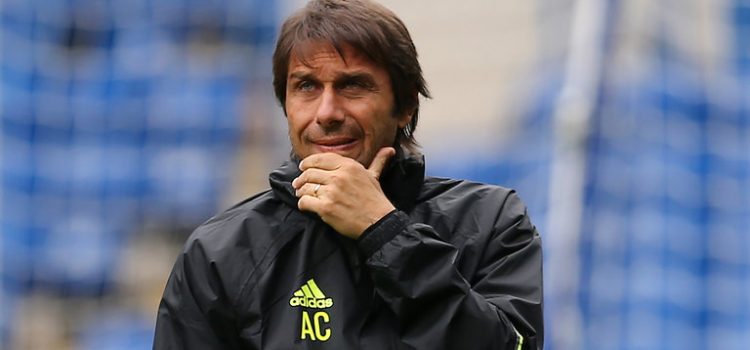Charles’ latest “The Mind of Conte” column.
Chelsea’s 3-4-3 formation was put to the test against Southampton over the weekend, and once again passed the test with flying colors.
Since switching from 4-3-3 to 3-4-3, Chelsea have kept four clean-sheets in a row and scored eleven goals in the process.
Here are my talking points from the Southampton away games.
Deeper setup
The Southampton game was the deepest we’ve seen Chelsea play.
While against Burnley, Leicester and United we’ve seen the Blues play with a mid to high block in large spells, away to the Saints, they seemed content to forego possession and sat deep in their half, inviting pressure on.
They didn’t press nearly as high as in previous games.
In this game, we also saw Chelsea shape up in a 5-2-3 formation without the ball, with both wing-backs dropping to make up a flat five men defensive line.
Kante and Matic provided extra protection in front of the defense, while the front three always looked ready to break away on the counter.
Azpilicueta, the ball playing center back
Upon Chelsea’s switch to a back three, most people would have assumed two things about David Luiz.
First, he would be playing in the middle of the back three; second, he would be the ball playing center back, carrying the ball out of defense.
While the first assumption has materialized, the second one hasn’t.
Instead, both Gary Cahill and Azpilicueta have had more touches, and made more passes and more sprints than Luiz over the past four games.
Out of the three defenders, Azpilicueta has been the main outlet in terms of getting the ball out of the back, with more than double the number of passes made by Luiz in the in the opposite half.
He also had ninety eight more touches than his Brazilian teammate.
Azpilicueta has been the best of the three center backs. He is the best one v one defender in the team, and has brought this ability to the back three.
Being a right back by trade, he is both comfortable covering out-wide when the wing-backs push forward, and running with the ball and stepping into midfield to create a numerical advantage.
Luiz, the anchor
Whether at PSG, with Brazil, or during his first spell at Chelsea, Luiz has always been the dynamic, aggressive and forward-minded one in a center back partnership.
Both John Terry and Thiago Silva have tended to be the anchors in defense, with Luiz buzzing around them, tracking attackers outside the box, stepping into midfield with the ball.
One of the reasons why Luiz has been surprisingly solid and virtually error-free in Chelsea’s new-look back three, is because he has been given a more conservative role by Antonio Conte.
He is now the anchor in the back three, sweeping in behind Cahill and Azpilicueta and dropping in their wide areas when needed.
Luiz has been given more responsibility and seems to relish the opportunity.
The role he now plays in the team requires the utmost concentration, and as a result, he has kept his game simple.
In this new position, he is also able to leverage his outstanding long range passing and play direct balls into the attackers, thereby by-passing the opposition’s first and second line of defense—skill-set which comes in particularly handy against high pressing teams.
Closing thoughts
Chelsea have impressed since switching formation.
They’ve been tested against different styles— passive, combative, counter attacking, high pressing, possession based football.
They have shown surprising maturity and tactical nous, adapting to each of these different styles.
They have effectively neutralized their opposition’s strengths, while exploiting their weaknesses.
Much credit goes to Antonio Conte for doing just what he said he would— finding a solution and getting the best out of his talented squad.
Written by Charles Codo
Follow Charles on Twitter @soccerCrave
Like O-Posts on Facebook
You can also follow O-Posts on Twitter @OPosts

